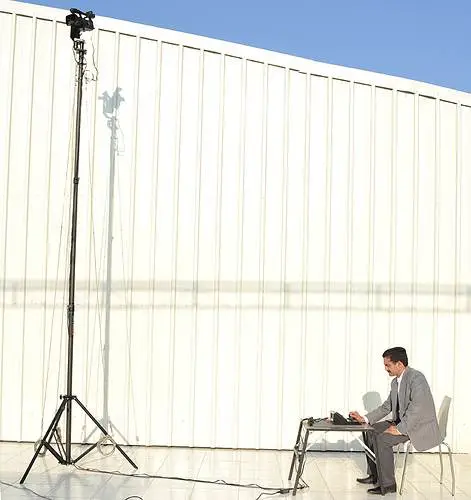 Not getting the right shots despite your best attempt? It may be because of the height from which you see the world.
Not getting the right shots despite your best attempt? It may be because of the height from which you see the world.
You raise your camera to your eyes and shoot a picture. This is easier for you than to change your perspective. You can change the angle and view the picture from a height. When you snap pictures from a height, your pictures become more interesting.
You would have observed many photographers carrying a stepladder with them. This is to shoot pictures from a height and get better shots. With changing times, photographers are now evolving from stepladders to camera poles. This technique is rewarding, though cumbersome. The benefit is that you not only get good pictures from a height but are also able to overcome the problems of things obstructing your view.
[Recommended reading: 10 Quick Tips to Take Great Mobile Phone Camera Photos]
How is a Pole Different from a Tripod?
The pole is anchored to the ground like a tripod but the top of the pole sways, unlike the latter. So, you need to adjust shutter setting for minimizing camera movement. Also, keep the pole as upright as you can.
Types of Camera Poles
Poles are used for CCTV, surveillance and security. They are available in square and round shapes.
Square Camera Poles – The material of square camera poles is steel. These poles are used in surveillance, security and CCTV work. They have anchor bolts and base plates and you can mount them on concrete foundation. These camera poles are also available in varying lengths.
Round Camera Poles – Like the square camera poles, these are also made from steel, used for CCTV, surveillance and security work, have anchor bolts and base plates and can be mounted on concrete foundations. Like the above, they are also available in varying lengths.
Hinged Poles – These are tilt-down poles, which offer you the benefit of being able to reach the cameras without using a lift to reach them. Since they are made of aluminium, they are lightweight. The hinged pole square and round cameras are available in varying colours but primarily in brushed aluminium. The specifications will depend on the kind of camera used and the purpose for which they are to be used.
Camera Pole Specifications
Here are the common specifications of camera poles:
Shape : Determine the shape of the bracket that you will use for mounting the camera. This will determine the shape of the pole that you will need.
Metal : Camera poles are available in round, and square shapes and in aluminium or steel metals. The most common kinds of poles are made of brushed aluminium. However, if you are looking for sturdiness, then square steel poles are the preferred choice.
Color : Steel poles can also be painted to match the surroundings.
Type : Nowadays, the hinged camera pole is in high demand. They have tamper resistant bolts that can be undone to adjust the height of the pole and tilt it.
Dimensions : The dimensions of the poles are usually 4 inches and the height varies from 10 feet to 25 feet.
Special Requirements
Wind requirement is another consideration when purchasing camera poles as the speed of the wind affects the camera and quality of picture. So if the wind exposure is high, then the pole gauge will be higher.
Camera poles can also be used for taking pictures of architecture, sports and for marketing. For all these you may need to get your camera up. You can get poles that can let you take pictures up to 10 feet, which is really high.
The benefits are that you can look above the crowd and take interesting pictures. Sometimes, when you are shooting sports pictures, getting a high vantage point can get you very interesting pictures.
Additional Accessories When Using Camera Pole
The kind and height of pole depends on the kind of camera you have. When using a digital camera, a lightweight aluminium pole works well but with a DSLR camera, you need something stout.
- Since the camera is heavy, you have to consider buying a square steel camera pole that will be able to hold the weight of the DSLR.
- A popular camera pole for the DSLR is that with fiberglass at the bottom and sturdy aluminium tubing. This will not only ensure good pictures but also the safety of your heavy and expensive camera.
- These poles are available from 5 feet to 18 feet height or 8-23 feet. The cost may be slightly expensive, but they are an insurance against mishap.
- When buying a camera pole, you must also buy a padded resting plate for landing protection when you bring the camera down from the pole.
- Use anchor weights at the bottom of the pole. The weights should be heavier than the total weight of camera, remote trigger or lens.
These are a few things to consider when you are buying camera poles. There are plenty of poles in the market. Choose the one that fits your needs and camera the best.
[Suggested reading: Must-have Computer Equipment for Photographers]
About the Author: Jeff Robertson writes for Australian camera pole specialist, G & S Industries.
[Image credit: dvcity, Flickr]



